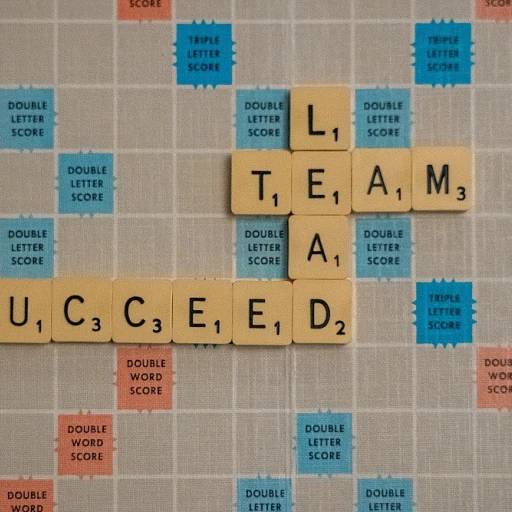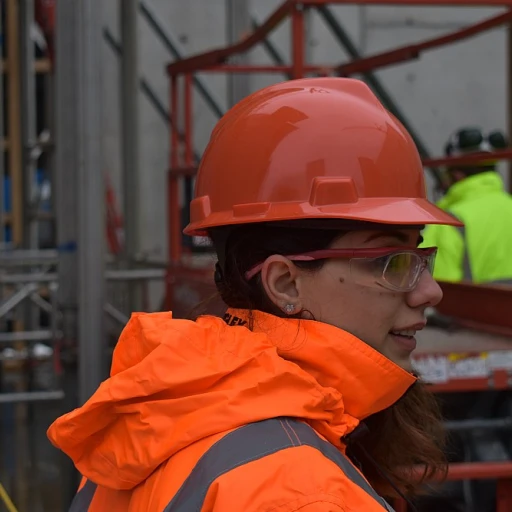
Understanding the Skills Gap
Identifying the Issues in Our Education Systems
The concept of a skills gap refers to the disparity between the skills employers seek and those available in the workforce. Understanding this gap is crucial in today’s rapidly evolving job market. The gap is evident as companies struggle to find candidates equipped with the necessary technologies and instructional strategies that align with modern industry needs.
In higher education and general education alike, educators are tasked with bridging this gap by employing specially designed teaching methods and teaching strategies. Such methods are not only crucial but also require cutting-edge techniques supported by technology tools. These tools, such as artificial intelligence and natural language processing, can transform traditional learning into a dynamic and relevant experience.
The challenges in addressing this skills gap are multifaceted. On one hand, there are the logistical and administrative hurdles within the classroom setting that teachers and institutions need to navigate. On the other hand, students, including those with disabilities or on the autism spectrum, require tailored, specially designed instruction to thrive. These challenges highlight the need for inclusive educational strategies that cater to all student demographics, ensuring equitable access to learning.
To effectively close this skills gap, there is an ongoing need for data-driven advocacy and action in education. By employing real-time data, educators can design content that is aligned with current industry requirements. Exploring this further, enhancing career opportunities through a college advancement program can be a pivotal approach in preparing the workforce for future demands.
In subsequent sections, we will delve deeper into how specialized instruction plays a crucial role in adapting educational practices to meet these needs, how speech language methods support learning, and the overall impact of special education solutions on reducing the skills gap.
The Role of Specialized Instruction
The Importance of Specialized Teaching for Skill Development
As we delve into bridging the skills gap, specialized instruction emerges as an essential approach in both general education and special education settings. By tailoring learning experiences to the unique needs of students, educators can effectively address diverse learning styles and abilities. This customized approach is not only beneficial for students with disabilities but also enhances learning outcomes for all students by providing specially designed content that meets individual needs.
One of the most significant developments in recent years is the integration of technology in the classroom. By leveraging tools like artificial intelligence and natural language processing, educators are able to offer real-time feedback and support to students. For instance, using data-based strategies, teachers can monitor student performance and make informed adjustments to their teaching methods, ultimately enhancing learning experiences.
The traditional one-size-fits-all model of education is becoming increasingly inadequate. With the incorporation of cutting-edge technology and methodologies, educators can provide instruction that is both flexible and responsive. For example, instructional strategies that incorporate speech language models can significantly benefit students on the autism spectrum, offering them tailored communication support.
Additionally, specialized teaching strategies offer considerable benefits in higher education, where students can engage in more immersive and practical experiences tailored to specific career paths. Institutions are adopting new teaching practices to prepare their students with skills required in the modern workforce.
To further emphasize the relevance of these approaches, consider the way enhancing dental expertise through targeted training programs tailored to specific professional needs fosters a deeper understanding and mastery of the subject matter, serving as an exemplar for specialized learning strategies across various disciplines.
Cutting-edge Techniques in Education
Embracing Technology for Enhanced Learning
In the rapidly evolving landscape of education, cutting-edge technologies are playing a pivotal role in transforming how students learn. These advancements are not just limited to general education but are making significant strides in specialized learning environments as well. The integration of technology in the classroom is providing teachers with innovative tools to tailor instruction to the diverse needs of their students.
Adaptive Learning Platforms
Adaptive learning platforms are at the forefront of this transformation. These platforms utilize data-driven insights to offer personalized learning experiences. By analyzing a student’s performance in real time, these systems can adjust the difficulty of tasks and provide content that is specially designed to meet individual learning needs. This approach is particularly beneficial for students with disabilities, including those on the autism spectrum, as it offers them the support they need to succeed.
Artificial Intelligence in Education
Artificial intelligence (AI) is another game-changer in the realm of education. AI technologies are being used to develop intelligent tutoring systems that can provide instant feedback and support to students. These systems are capable of processing natural language, allowing them to interact with students in a more human-like manner. This can be especially helpful in speech language instruction, where real-time feedback is crucial for effective learning.
Virtual and Augmented Reality
Virtual reality (VR) and augmented reality (AR) are also making their mark in education. These immersive technologies offer students the opportunity to explore environments and scenarios that would be impossible to experience in a traditional classroom setting. For instance, VR can be used to simulate historical events or scientific phenomena, providing students with a deeper understanding of the subject matter.
Challenges and Opportunities
While these technologies offer exciting opportunities, they also present challenges that need to be addressed. Teachers must be equipped with the necessary skills and training to effectively integrate these tools into their teaching practices. Additionally, there is a need for ongoing support and resources to ensure that all students can benefit from these advancements. For more insights on how technology is bridging the skills gap, you can explore the innovative methods being implemented in various educational settings.
Case Studies of Successful Implementation
Implementing Innovative Learning Approaches
In the journey of addressing the skills gap, real-world examples of successful implementation serve as both inspiration and guidance for educators and institutions. Here, we delve into several cases where unique methods of instruction have greatly enhanced learning outcomes for students across various educational settings. One exemplary case involves the integration of cutting-edge technology in classrooms to support students with disabilities, such as those on the autism spectrum. By employing tools like artificial intelligence and natural language processing, educators have created specially designed instruction materials that cater to individual learning needs. These technologies allow real-time data processing, enabling teachers to adjust instructional strategies instantaneously based on students' responses and progress. Furthermore, educators have successfully utilized speech-language tools to improve communication skills in students with special education needs. This technology-based approach ensures that instruction is tailored to the student's language proficiency, providing them with opportunities to advance at their own pace. By combining these tools with traditional teaching methods, a hybrid learning environment is created, bridging the gap between special and general education. Another noteworthy success is the implementation of specially designed strategies in higher education institutions, focusing on disadvantaged groups. These institutions have developed teaching practices that prioritize inclusivity and accessibility, offering customized content that reflects diverse learning preferences. As a result, students who might have struggled in a conventional educational framework are now thriving, thanks to the targeted support and instruction adjusted to their unique situations. These case studies highlight the incredible potential that innovative approaches in education hold for addressing the skills gap. By adopting a blend of technologies and tailored teaching strategies, educators are not only enhancing learning outcomes but also ensuring that no student is left behind. The potential for these methods to be adapted and scaled across various educational contexts remains vast, promising a future where tailored education becomes the norm.Challenges and Opportunities
Addressing the Hurdles in Implementing Specialized Learning
Specialized learning methods, while innovative and promising, come with their own set of challenges and opportunities. Many of these arise from the need to integrate cutting-edge technologies and teaching strategies into traditional education frameworks. Understanding how to effectively bring specialized instruction into the classroom remains a complex task.
One significant challenge is ensuring that both teachers and students are adequately prepared to engage with new technologies. Educational tools like artificial intelligence and natural language processing hold immense potential but require substantial training and support to be used effectively. Teachers need time and resources to develop new instructional strategies that incorporate these advancements.
Differentiating content and teaching practices to meet the diverse needs of students, particularly those with disabilities or on the autism spectrum, is another hurdle. Special education requires specially designed instruction tailored to individual learning styles and needs. This necessitates continuous professional development and support to equip educators with the skills necessary to adapt their teaching methods.
Moreover, the integration of real-time data analysis and speech-language technologies into teaching can propel learning forward but also present privacy concerns. Educators and institutions must navigate these ethical considerations while leveraging the benefits of such tools. This balance is critical for both the trust of students and the integrity of education systems.
Opportunities arise from addressing these challenges. Innovative instructional strategies can bridge the gap between general and higher education by providing personalized pathways for student success. Engaging students with interactive technologies not only enhances motivation but also helps build competencies that align with the evolving demands of the workforce.
As educators and institutions stay committed to overcoming these challenges, the potential for technology-based education to foster an inclusive and effective learning environment will continue to grow. The focus on tailored learning experiences will ultimately support a wide range of learners, encouraging them to thrive in any educational setting.
Future Trends in Specialized Learning
{"Future Transformations in Specialized Learning
The evolution of specialized learning is set to continue at an accelerating pace, driven by new developments in technology and an increased focus on tailored instructional strategies. Let's explore some significant trends that will likely shape the landscape of education in the coming years.
- Integration of Artificial Intelligence: AI is not just transforming businesses; it's revolutionizing education. By using AI, educators can offer personalized learning experiences in real time, adapting content and instruction to meet the diverse needs of students. Whether it’s through natural language processing or data-driven insights, AI-powered tools help students by providing individualized support and accommodations, especially for those with disabilities or on the autism spectrum.
- Emphasis on Specially Designed Instruction: Traditionally, special education has often been separated from general education. In the future, we'll see a more integrated approach with specially designed instruction blending into general classrooms. Teachers will leverage state-of-the-art teaching practices and instructional strategies that cater to the unique requirements of students special or those who have specific learning needs.
- High-Tech Classrooms: The classroom of the future will be equipped with the latest technologies, bridging the gap between traditional teaching methods and modern demands. From speech language tools to augmented reality, these innovations will play a critical role in delivering engaging educational experiences. This approach is not just about technology; it's about strategies that use these tools to maximize student engagement and learning outcomes.
- Data-Driven Decision Making: As we collect more data on educational outcomes, schools will increasingly rely on data to make informed decisions about teaching methods and resource allocation. Whether it’s tracking students' progress or identifying which instructional strategies work best, data will become a vital component of education strategies.
These emerging trends underscore the importance of preparing for the future by fostering a versatile and adaptive education system. Teachers and educators will need ongoing support to stay current with cutting-edge technology and to develop new methodologies that accommodate a broad spectrum of student needs.












